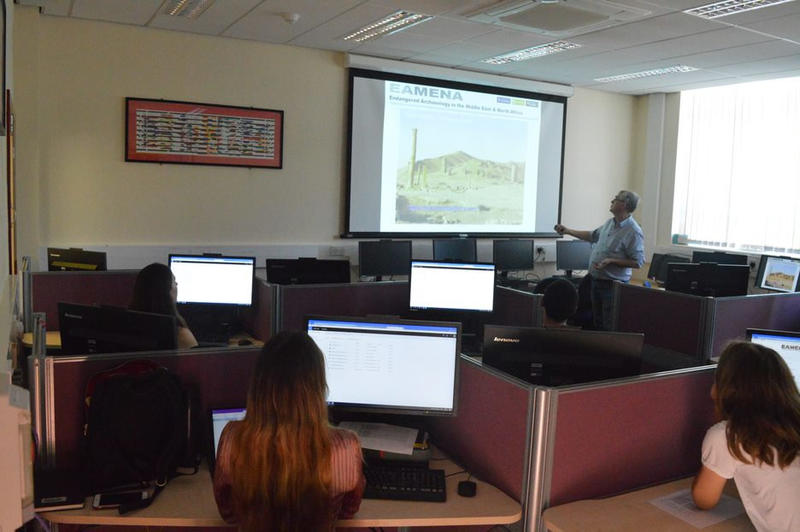Posted 29/8/2018
Catherine Talbot writes
This July I took part in the two week EAMENA volunteer program at Durham University Department of Archaeology where I was trained in the use of satellite imagery for locating and monitoring archaeological sites in the Middle East. Having studied cases of heritage destruction such as Palmyra and the Bamiyan Buddhas during my Masters in Cultural Heritage Management, I really appreciate how important the work of the EAMENA project is. I joined the project because I wanted to help provide people living in the region with data to help them protect their heritage.
There were eight volunteers on the course and we were first given a range of presentations about what sorts of sites we could expect to find and how to monitor them. Then we were each given four areas in which to search for archaeological sites. I particularly enjoyed this task because every site I entered into the EAMENA system could be something unique and special, and I was contributing to the documentation of that heritage. It’s very rewarding work.

Figure 1 Presentations were helpful for introducing the archaeology in Syria and Iraq.
Most of the training course took place in the computer room of the Department of Archaeology, and while I enjoyed my work at the desk, I can certainly say that my favourite moment of the course was when we went on a field trip to Durham’s World Heritage Site, Durham Castle, to conduct an on-the-ground condition assessment. It was a valuable experience and one which we all enjoyed.

Figure 2 Participants carry out a condition assessment on Durham's heritage sites.
On the final day we gave short presentations to the class about one of the sites we had identified. It was a great reflective moment to look back on all the places we had documented and to consider how many heritage assets we had found as a team. I’m looking forward to continuing volunteer work in September and would like to thank everyone who was involved in the training program. For me, it has been a rare opportunity and a unique experience.

Figure 3 Training Class of 2018.